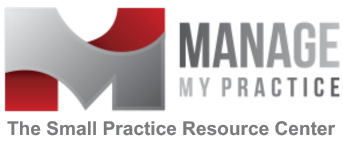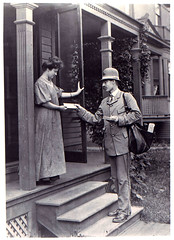
Image via Wikipedia
- All available appointments are full.
- All staff showed up for their shifts.
- No one burns toast in the toaster oven and sets off the fire alarm.
- None of the staff show up to work wearing flip-flops or pink underwear beneath their white scrubs.
- All patients have been reminded about their appointments so they all show up.
- Patients calling for same-day appointments are able to be worked-in appropriately.
- No patients give false information at check-in.
- Established patients arrive on time with their insurance information and co-pay.
- New patients arrive on time to complete their paperwork, and give their insurance card, photo ID and co-pay to the receptionist.
- Patients with x-rays or other imaging studies bring the films or a CD.
- Patients with fasting appointments arrive having fasted.
- All patients arrive bringing their bag of medications.
- Patients in wheelchairs and with difficulty ambulating are accompanied by caregivers.
- Patients who do not speak English or are deaf have notified the office prior to the appointment and the appropriate technology or interpreters are available for the appointment.
- Patients with procedure appointments have followed their pre-procedure instructions.
- Patients with procedures have been pre-authorized by their insurance carrier and their personal financial responsibility has been discussed with them and payment arrangements have been made.
- Patient eligibility has been checked and those unable to be authorized have been called before their appointment to gain further information about their payer source.
- If computers go down, there are paper procedures in place to enable staff to continue seeing patients.
- No patients arrive saying “I forgot to tell you, this is Worker’s Comp/ an auto accident/ a liability case and I was told by my lawyer not to pay anything.”
- None of the patients pee on a waiting room chair.
- Neither JCAHO nor any state or federal officers show up.
- The copiers and faxes all work.
- No subpoenas come in the mail.
- Image by Smithsonian Institution via Flickr
- It’s not your very first day live on electronic medical records.
- All phone calls are answered before the third ring and no one has to leave a message.
- No patients walk in the door with severe chest pains and say “I knew the doctor would want to see me.”
- Patients remember to call the pharmacy for refills.
- Providers all run on time and seem in particularly good moods.
- Patients get their questions answered with callbacks within two hours.
- Someone delivers sandwiches, drinks and brownies to the practice for lunch. There is enough for everyone.
- No bounced checks come in the mail.
- Providers spend so much time in the exam room listening to their patients that the patients leave feeling that every question they had (and a few they didn’t know they had) was answered.
- Providers circle the services and write the diagnosis codes numerically on the encounter form, remembering that Medicare doesn’t pay for consults any more.
- Sample medications that providers want to give patients are in the sample closet.
- Records that providers want to reference are in the chart and are highlighted.
- No one calls urgently for old medical records that are in the storage unit across town.
- There are no duplicate medical records.
- Patients checking out never say “But he was only in the room for 5 minutes!”
- The patient restrooms don’t run out of toilet paper.
- No bankruptcy notices come in the mail.
- All phlebotomists get blood on the first stick.
- No kids cry.
- The HVAC system works beautifully, keeping it cool where it needs to be cool, and warm where it needs to be warm.
- Congress announces that the SGR formula has been revoked and a new reasonable model for paying physicians has been discovered.
- Everyone goes home at 5:00 p.m., glad to have a job, glad to be of service, and happy with their paychecks.


